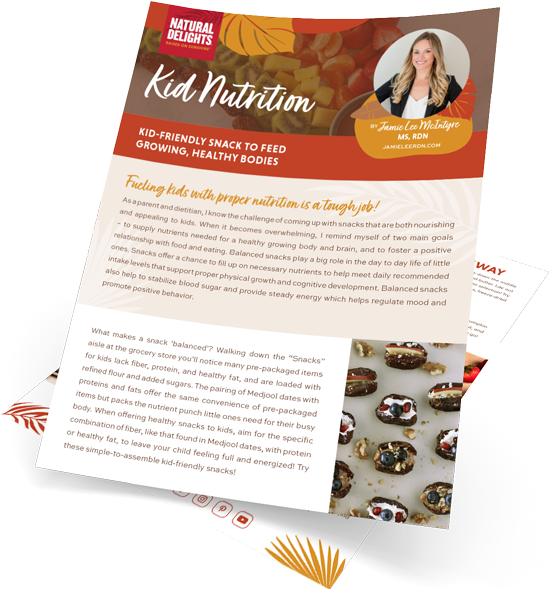All statements on this page have been written and peer reviewed by registered dietitians. All statements are made by that of the author as an expert in health sciences and not by Natural Delights as a company.
Kids love sweet flavors, but the American Academy of Pediatrics recommends aiming for less than 25 grams (about 6 teaspoons) of added sugar per day for children 2 years and older and to avoid serving added sugar to children under 2 years old1.

Increases satiety and keeps kids feeling full
May help support healthy bowel movement frequency
May help reduce risk of developing certain cancers
When increasing fiber in your child's diet, remember to spread it out between multiple meals and snacks (instead of all at once), consume adequate water intake, and fit fiber sources into familiar meals and snacks.
Tips for Promoting Variety and Exploring New Foods
A child is more likely to accept a new food when they feel a sense of ownership, so engage kids into the planning and prep work by having them:

Nothing halts the momentum of a busy school day like a crash in energy and sudden onset of hunger. Keep growing bodies and brains fueled with the winning combination of complex carbohydrates plus protein and healthy fats for sustained energy all day long!

These statements have not been evaluated by the Food and Drug Administration. This product is not intended to diagnose, treat, cure or prevent any disease.